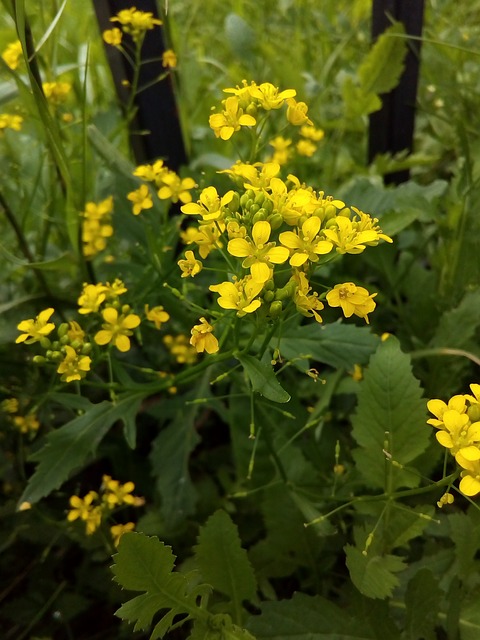 |  |  |   |  |
 |  |  |
The winter- Cress is a biennial plant. In the first year, the rose leaves in this way, and in the second year, a stem is formed. The stem is leafy, 30-70 cm tall. The stem is bare, without any hairs. The leaves are arranged alternately, the lower ones on the petioles, lyre-shaped with 2-4 pairs of elongated lateral lobes and larger, oval ones at the apex. The upper leaves are sessile, entire, oval with a toothed edge. The flowers are yellow, with four petals, located at the top of the stem, in a bunch. Fruits - four-sided pods. Blooms in May-June.
For medicinal purposes, the rhizomes, which are collected during flowering and the rhizomes of the first year, which are collected in late autumn or early spring, are used.
The drug is dried in a dark, well-ventilated place, spreading the plant in a thin layer (<5cm). The plant is stored in paper bags for no longer than one year. If the leaves remain yellow during drying, then they are no longer useful for the drug - this phenomenon can be observed if they are stacked in an excessively thick layer during drying.
To date, the plant is considered insufficiently studied, but it has been used in folk medicine for a long time. Glycoside sinigrin, flavonoids, saponins, fiber, essential and mustard oil, thioglycoside glucobarbarin, group B vitamins, ascorbic acid and organic acids have been found in the plant. Vegetable fats, quercetin and kaempferol.
Medicinal significance
Winter- Cress seeds contain a vegetable oil and are traditionally used in baking bread, which is used to treat nervous system problems.
The roots have diuretic properties and are used for antibacterial purposes. In addition, root preparations are used to treat infertility, prostatitis and sexual dysfunction.
Flowers help strengthen immunity and have a beneficial effect on the nervous system, cardiovascular and urinary system. Flowers promote cell growth and regeneration.
The leaves are a valuable source of vitamins and organic acids. They regulate the acid-alkaline balance in the body, in addition, they have anti-inflammatory properties. In addition, in early spring they are also used as an ingredient in salads.
Winter- Cress has diuretic and sexual stimulating properties. The stimulating properties of this plant on the sexual organs have been determined experimentally. The mass of the prostate gland increased, hyperplasia of the glandular epithelium, enlargement of the ends of the prostate gland was observed. In addition, the juice of the plant acted more strongly as a setting for spermatogenesis.
Each part of the plant has its own meaning. The roots of the plant are used as a diuretic, with the help of which the body is freed from excess solution, reducing edema. However, the diuretic effect is mild. The seeds of the plant have a laxative effect by stimulating intestinal peristalsis.
Fresh leaves are applied to wounds, cuts, bruises and burns. They help heal tissue and stop bleeding.
The leaves are dried to make alcoholic extracts and decoctions. These agents are used to increase the body's defenses, especially if a person suffers from diseases of the kidneys, bladder and genitals.
Medicinal properties of tea and decoctions of winter- Cress are used to normalize the hormonal background in both men and women, to get rid of prostatitis and other inflammatory diseases of the male genital organs, to treat gynecological infectious diseases, to treat mastopathy, to reduce PMS symptoms, to cleanse the kidneys and to reduce arterial pressure.
Women who have been diagnosed with hormonal disorders, mastopathy, fibroids, and gynecological inflammatory diseases should remember about the barberry beast.
